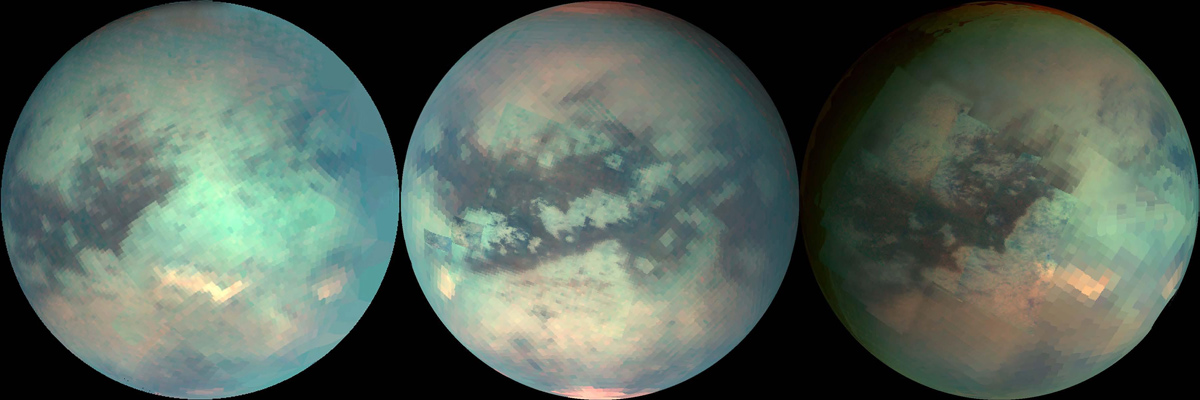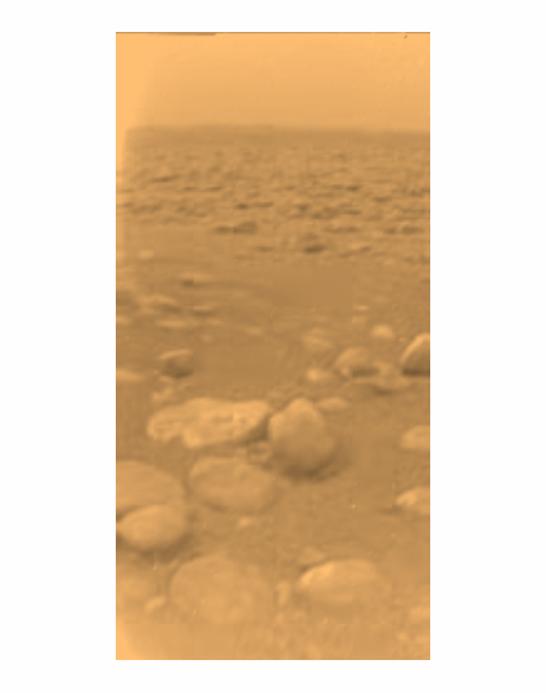Tiny 'Titans in a Jar' Could Help Scientists Unravel Habitability

To help determine whether Saturn's moon Titan could host life, researchers are modeling many possible realities of this icy world within tiny glass jars.
On June 27, NASA announced it would launch the Dragonfly mission to Titan in 2026. Once the mission arrives in the year 2034, the rotorcraft will fly over Titan's surface, visiting two dozen locations to investigate atmospheric and surface conditions that may be friendly to life.
Titan is intriguing because it may be very similar to ancient Earth before our home hosted life, and Titan is the only moon in the solar system with a dense atmosphere like the blue planet. Previous missions have also revealed that Titan has liquid on its surface.
Related: Farewell, Titan! Cassini's Last View of Saturn Moon Shows Fabulous Methane Lakes
Before the mission launches, however, researchers at Southern Methodist University will tackle the question in the lab using a $195,000 grant from the Houston-based Welsh Foundation. To explore Titan's organic-molecule possibilities, the team is recreating the moon's conditions in multiple glass cylinders, or "Titans in a jar," according to a university statement.
"Titan is a hostile place, with lakes and seas of liquid methane, and rains and storms of methane," Tom Runčevski, lead researcher on the project and a chemist at the university, said in a statement. "The storms carry organic molecules produced in the atmosphere to the surface, and at the surface conditions, only methane, ethane and propane are liquids. All other organic molecules are in their solid form — or, as we would call them on Earth, minerals."

The team intends to mimic the process in tiny jars. "We can recreate this world step by step in a cylinder made of glass," he said. "First, we will introduce water, which freezes into ice. Second, we will top that layer of ice with ethane that liquidizes as a 'lake.' Then we will fill the remaining cylinder with nitrogen."
Get the Space.com Newsletter
Breaking space news, the latest updates on rocket launches, skywatching events and more!
By then introducing different molecules to the systems, the team can mimic rainfall and drought to produce different versions of the Titanian surface.
The researchers will use data collected during the Cassini-Huygens mission to replicate Titan's conditions, and perhaps get a good grasp of what this distant solar system world is like before Dragonfly takes off to see for itself.
- Two for One: Saturn Moon Titan Dwarfs Tethys in Stunning Cassini Photo
- Dazzling Views Show Saturn Moon Titan's Surface Like Never Before
- Cassini's Death Dive into Saturn Reveals Weird Ring 'Rain' & Other Surprises
Follow Doris Elin Salazar on Twitter @salazar_elin. Follow us on Twitter @Spacedotcom and on Facebook.
Join our Space Forums to keep talking space on the latest missions, night sky and more! And if you have a news tip, correction or comment, let us know at: community@space.com.

Doris is a science journalist and Space.com contributor. She received a B.A. in Sociology and Communications at Fordham University in New York City. Her first work was published in collaboration with London Mining Network, where her love of science writing was born. Her passion for astronomy started as a kid when she helped her sister build a model solar system in the Bronx. She got her first shot at astronomy writing as a Space.com editorial intern and continues to write about all things cosmic for the website. Doris has also written about microscopic plant life for Scientific American’s website and about whale calls for their print magazine. She has also written about ancient humans for Inverse, with stories ranging from how to recreate Pompeii’s cuisine to how to map the Polynesian expansion through genomics. She currently shares her home with two rabbits. Follow her on twitter at @salazar_elin.









